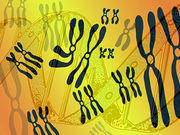Epstein-Barr virus EBNA2 protein binds to multiple loci of genome, increasing risk of 7 serious diseases
MONDAY, April 16, 2018 (HealthDay News) — Transcription factors (TFs) seem to operate across gene loci, according to a study published online April 16 in Nature Genetics.
John B. Harley, M.D., Ph.D., from the Cincinnati Children’s Hospital Medical Center, and colleagues used new computational methods to examine the loci that TFs occupy in individuals with complex genetic disorders.
The researchers identified 2,264 relationships between hundreds of TFs and 94 phenotypes, including androgen receptor in prostate cancer and GATA3 in breast cancer by application to 213 phenotypes and 1,544 TF binding datasets. The Epstein-Barr virus EBNA2 protein and many coclustering human TFs occupied nearly half of systemic lupus erythematosus risk loci. In multiple sclerosis, rheumatoid arthritis, inflammatory bowel disease, type 1 diabetes, juvenile idiopathic arthritis, and celiac disease, similar EBNA2-anchored correlations exist. Genetic mechanisms dependent on EBNA2 are also supported by instances of allele-dependent DNA binding and downstream effects on gene expression at plausibly causal variants.
“Our results nominate mechanisms that operate across risk loci within disease phenotypes, suggesting new models for disease origins,” the authors write.
Abstract/Full Text (subscription or payment may be required)
Copyright © 2018 HealthDay. All rights reserved.








